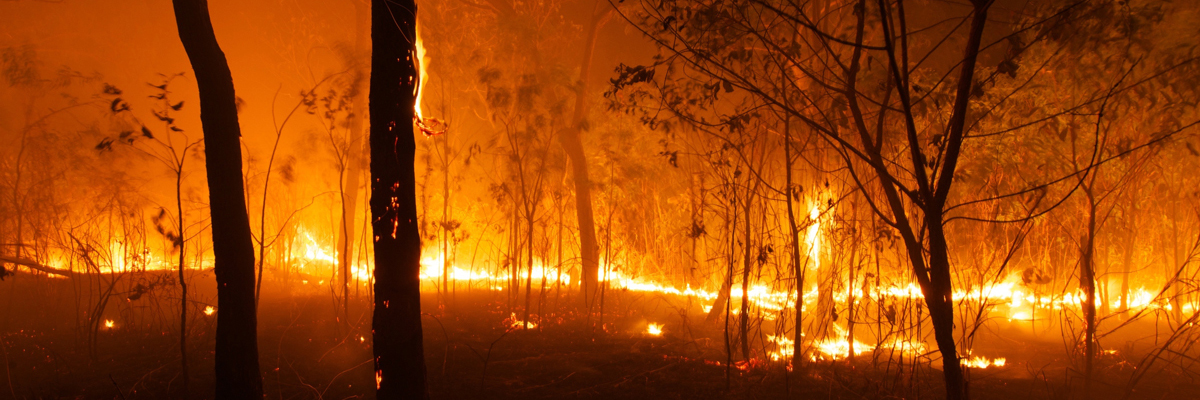Expert Insights: Why Every Homeowner Needs a Thorough BAL Report
Expert Insights: Why Every Homeowner Needs a Thorough BAL Report
Blog Article
Ensuring Bush Fire Security With Appropriate BAL Report Analysis
In the world of bush fire security, the precise analysis of Bushfire Assault Degree (BAL) reports stands as a keystone for guarding residential or commercial properties versus the terrible impact of wildfires. With ecological factors and building attributes playing significant duties in identifying the level of risk, a complete understanding of BAL ratings ends up being essential. Nonetheless, the genuine significance exists not simply in understanding these reports however in analyzing them properly to formulate customized fire protection strategies. By diving into the value of BAL record evaluation, we reveal a realm where informed decisions pave the path in the direction of bolstering residential or commercial property safety and security and resilience in fire-prone regions.
Recognizing Bushfire Assault Degree (BAL)
In the world of bushfire protection, understanding the Bushfire Attack Degree (BAL) is extremely important for making sure efficient mitigation strategies. BAL is a system used to determine the potential risk a structure might face from a bushfire. It takes into consideration factors such as the sort of plant life, the incline of the land, the Fire Threat Index, and the Fire Extent Index. Recognizing the BAL rating of a residential property is essential for residential or commercial property building contractors, policymakers, and proprietors to execute suitable measures to protect against bushfire threats.

Importance of BAL Report Analysis
A necessary element in bushfire protection preparation entails the comprehensive analysis of BAL records to assess the prospective dangers and identify proper mitigation methods. BAL reports provide crucial details concerning the prospective impact of bushfires on a residential property based on different factors such as plant life kind, range to potential fire hazards, and incline of the land. Examining these records with precision is extremely important in developing effective bushfire protection measures tailored to the specific danger account of a residential or commercial property.
Carrying Out Fire Protection Actions
Implementing reliable fire protection measures is essential for safeguarding properties in bushfire-prone locations. Among the main means to boost fire protection is by producing defensible space around buildings. This involves clearing combustible plant life, such as completely dry leaves and branches, within a certain span of the property. Furthermore, mounting fire-resistant roof covering products can assist decrease the threat of ashes igniting the roofing during a bushfire. Appropriately kept screens and rain gutters are likewise necessary to stop debris build-up that could sustain a fire.
Moreover, having a appropriate and well-maintained water supply, such as a container or pool, can aid firemans in their efforts to secure the residential or commercial property. It is necessary to have a clear discharge strategy in place and to ensure that all locals know with the treatments. Additionally, having firefighting devices readily available, such as hoses and fire extinguishers, can assist in tackling small spot fires before they intensify. Generally, carrying out a mix of these fire protection actions can dramatically increase the opportunities of guarding residential properties during bushfire occasions.
Mitigating Threats in Fire-Prone Areas
To strengthen residential or commercial properties against bushfire hazards, a strategic focus on mitigating dangers in fire-prone locations is critical. One essential element of danger mitigation is maintaining defensible space around buildings by clearing flammable plant life, making certain adequate spacing in between structures and trees, and using fire-resistant landscaping methods.
Furthermore, building or retrofitting buildings BAL Report with fire-resistant materials and guaranteeing appropriate upkeep of roofing systems, seamless gutters, and exterior cladding can dramatically improve the residential or commercial property's resilience to bushfires. Creating and practicing a bushfire emergency situation plan with all occupants, consisting of emptying procedures and interaction approaches, is likewise important in mitigating dangers effectively. By embracing a proactive strategy to run the risk of mitigation in fire-prone locations, residential property owners can much better safeguard their assets and enhance total bushfire preparedness.
Ensuring Home Safety and Strength
Making sure the safety and durability of properties in fire-prone areas calls for a steadfast dedication to robust preventative steps and critical planning. Residential property safety begins with applying effective procedures to reduce fire risks. This consists of maintaining a defensible area around the building by clearing flammable plants, ensuring appropriate maintenance of seamless gutters and roofings, and utilizing fire-resistant structure materials. Normal upkeep of firefighting equipment, such as pipes and sprinkler systems, is also important to building resilience.
Resilience, on the various other hand, involves the ability of a building to endure and recoup from a bushfire. By proactively attending to these facets, building owners can much better protect their possessions and enjoyed ones from the threat of bushfires.
Conclusion
In conclusion, ensuring bushfire defense via appropriate BAL record evaluation is vital for comprehending the degree of danger positioned by bushfires and executing Resources essential fire protection actions. By minimizing dangers in fire-prone locations and making sure residential property security and strength, individuals and neighborhoods can better why not find out more prepare for and react to bushfire occasions. It is vital to prioritize fire precaution to secure lives and residential or commercial property in these risky settings.
In the realm of bush fire protection, the precise evaluation of Bushfire Attack Level (BAL) reports stands as a keystone for safeguarding properties versus the damaging impact of wildfires (BAL Report). Comprehending the BAL ranking of a residential or commercial property is vital for residential or commercial property proprietors, contractors, and policymakers to implement suitable actions to guard against bushfire risks

BAL records supply important info concerning the prospective effect of bushfires on a home based on numerous variables such as greenery kind, range to prospective fire risks, and slope of the land (BAL Report). Overall, applying a combination of these fire security measures can substantially increase the opportunities of protecting buildings throughout bushfire events
Report this page